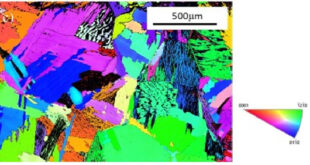Significance
Advancements in acoustic sensors have transformed the information and communication sector owing to their ability to convert the sound wave energy into electrical energy. Among the available acoustic sensors, microphones have attracted significant attention of researchers owing to their vast applications in areas of smartphones, voice recognition, hearing aids among others.
Generally, they work in conjunction with other devices such as amplifiers, magnets and coils. Among the available types of microphones, those with uniform frequency response are widely preferred for various scientific applications. Unfortunately, limitations associated with complex vibration characteristics especially in the thin circular membranes is a great challenge in microphones. Therefore, an efficient technique for solving such limitations is highly desirable.
Incorporation of functional materials such as graphene in conjunction with biomimetic approaches has been identified as a promising solution for addressing the limitations. Alternatively, close interest in developing acoustic sensors based on mimicking various human systems like the auditory system has also gained significant interest in the recent past. This has led to the investigation of the dynamic behavior of the tympanic membrane found within the human auditory system which is generally different from other thin membranes. However, tympanic membranes do not give the desired vibration characteristics thus an improvement is highly desirable.
To this note, Dr. Jong-Yun Yoon at Incheon National University and Dr. Gi-Woo Kim at Inha University developed a new biomimetic diaphragm similar to the tympanic membrane and accessed its feasibility in mimicking the human auditory system. Their main aim was to improve the vibration characteristics of the diaphragms used in acoustic sensors. Their research work is currently published in the research journal, Mechanical Systems and Signal Processing.
Briefly, the experimental work comprised of an oval and conical shaped diaphragm structure fabricated by three-dimensional printing technology. Next, the static axial stiffness of the diaphragm and the dynamic behavior of the vibrating system were analyzed using the static force analysis method and nonlinear frequency response analysis respectively. Eventually, they accessed the bilinear nonlinearity of the developed diaphragm so as to validate its feasibility in enhancing the vibration characteristics.
The authors observed that weak excitations resulted in linear frequency responses while stronger excitations resulted in nonlinear behaviors, attributed to larger operating displacement above the critical value. However, the unwanted nonlinear behavior was effectively eliminated by the bilinear stiffness of the diaphragm.
In summary, Dr. Jong-Yun Yoon and Dr. Gi-Woo Kim successfully harnessed the bilinear nonlinearity of the novel biomimetic diaphragm. For instance, it was worth noting that alternating the diaphragm shape in acoustic sensor resulted in the desired flat and broad frequency suitable for various applications. In general, the study showed the significance of the three-dimensional printing technology in fabricating the diaphragm membranes. This will further lead to the advancement of acoustic sensors and other electrical devices through analysis of the bilinear stiffness models and extension of frequency ranges.

Reference
Yoon, J., & Kim, G. (2019). Harnessing the bilinear nonlinearity of a 3D printed biomimetic diaphragm for acoustic sensor applications. Mechanical Systems and Signal Processing, 116, 710-724.
Go To Mechanical Systems and Signal Processing Advances in Engineering Advances in Engineering features breaking research judged by Advances in Engineering advisory team to be of key importance in the Engineering field. Papers are selected from over 10,000 published each week from most peer reviewed journals.
Advances in Engineering Advances in Engineering features breaking research judged by Advances in Engineering advisory team to be of key importance in the Engineering field. Papers are selected from over 10,000 published each week from most peer reviewed journals.


